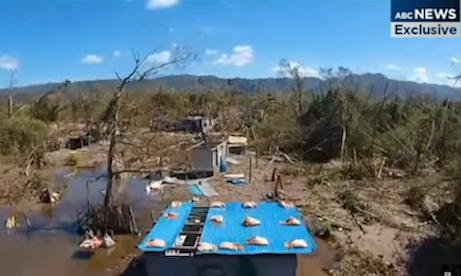On Monday Cyclone Donna spiked at category 5 with winds sustained at 215km/h and gusting 260km/h, making it the strongest ever May cyclone recorded in the entire Southern Hemisphere.
Climate scientist Jim Salinger said Donna’s lateness and intensity is a direct result of a changing climate.
He said late cyclones such as Donna were rare, but not unheard of.
However, he said this one was unusual as the sea temperatures around Vanuatu and New Caledonia are what they would normally be in March.
“Well we’re not in an El Niño and we’re not in a La Niña, so you would not expect temperatures to be that warm, though they can be on occasions.
“So what we’re seeing happening here is, I’d say, there’s a bit of global warming going on,” Salinger says.”
Not all agree with Salinger.
Meteorologists say, on the whole, the cyclone season has been close to normal.
“Even though we don’t have a very strong ENSO event – (either La Niña or El Niño) – going on right now, when we have these neutral phases, you can still get periods of time when the weather pattern is either reflecting La Niña-like or El Niño-like conditions,” Niwa meteorologist Ben Noll told the New Zealand Herald.
On Monday evening the cyclone was battering Vanuatu’s capital Port Vila.
Residents sought shelter in evacuation centres as the weather worsened.
In the north of Vanuatu, the storm has been raging for days. It has been reported that many homes have been flattened and infrastructure has been destroyed.
Many people are said to be at risk of disease from contaminated water sources.
But the extent of the destruction is still unclear.
“Part of the issue is that those communities are so incredibly remote and very hard to get in communication with,” Unicef spokesman Lachlan Forsyth told the New Zealand Herald.
Source
